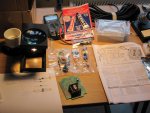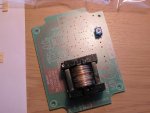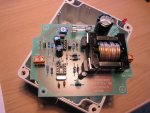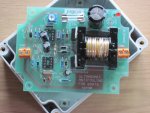Norman_E
Well-known member
As promised I am posting this thread to describe the build, and hope that others doing so will be helped by it, and post their own hints and tips.
For someone like me, who last dabbled with electonics as a teenager some 50 years ago, modern electronics are witchcraft performed with unfamiliar components. For me the first job is a dry run assembly of the components to the PCB, and the photos below show most of the kit spread out on the work table, with the ready made coil and the trimpot already "planted" on the PCB.
A vital point is the correct identification of the components, and the Jaycar instructions do provide a component list with some identification guidance. Resistors are now tiny things compared to the ones of my youth, and an illuminated magnifier was invaluable in identifying them, as was this website. http://www.diyaudioandvideo.com/Electronics/Color/
I had been puzzled by one resistor which had a gold band in a position where it meant nothing from the Jaycar instructions, because I had looked in the wrong place, (codes brown black black gold brown) but the website revealed that it divided the first three by 10, hence 1 0 0 / 10 = 10 ohms.


For someone like me, who last dabbled with electonics as a teenager some 50 years ago, modern electronics are witchcraft performed with unfamiliar components. For me the first job is a dry run assembly of the components to the PCB, and the photos below show most of the kit spread out on the work table, with the ready made coil and the trimpot already "planted" on the PCB.
A vital point is the correct identification of the components, and the Jaycar instructions do provide a component list with some identification guidance. Resistors are now tiny things compared to the ones of my youth, and an illuminated magnifier was invaluable in identifying them, as was this website. http://www.diyaudioandvideo.com/Electronics/Color/
I had been puzzled by one resistor which had a gold band in a position where it meant nothing from the Jaycar instructions, because I had looked in the wrong place, (codes brown black black gold brown) but the website revealed that it divided the first three by 10, hence 1 0 0 / 10 = 10 ohms.


Attachments
Last edited:


